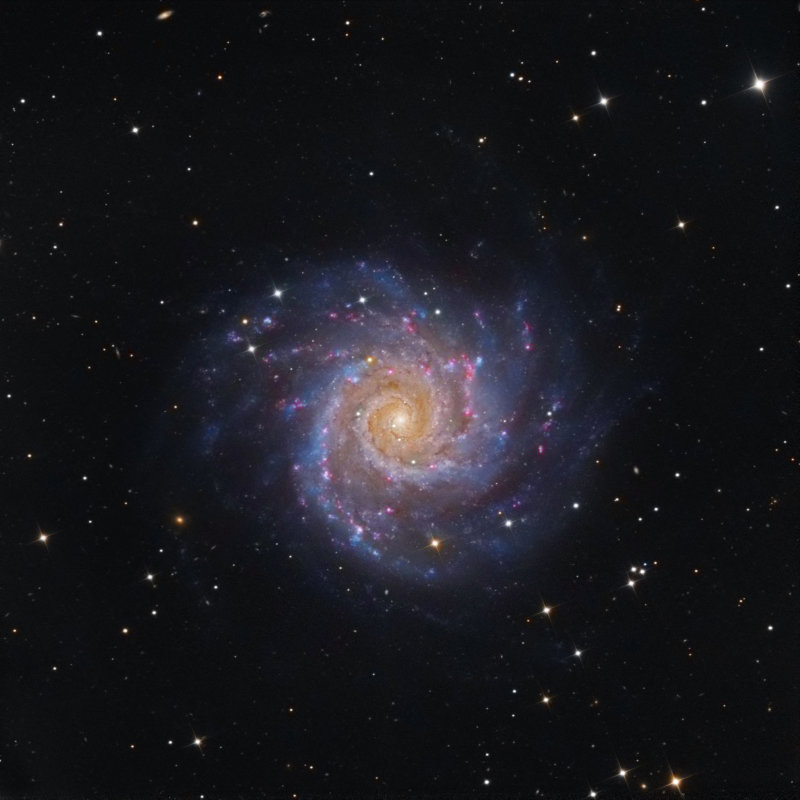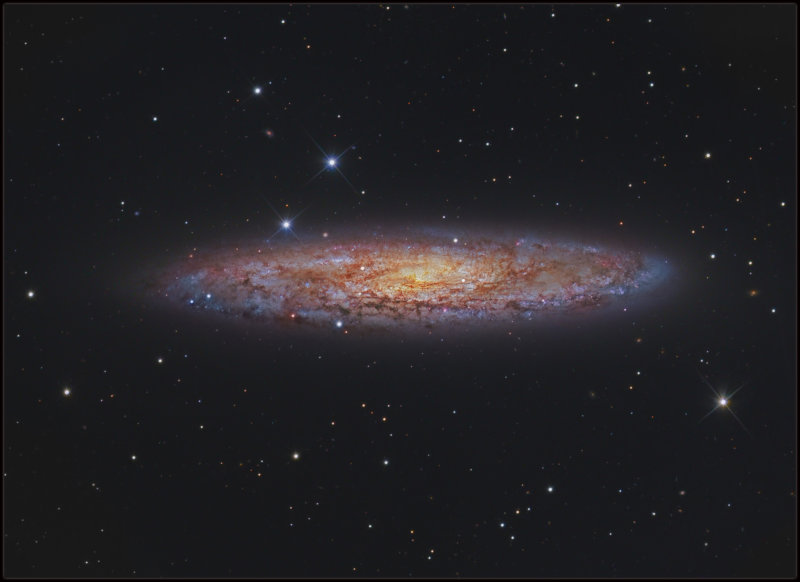Submission: 2019 February
Re: Submission: 2019 February
A few new images:
Inside the Tarantula RGB: Hubble color mapping: Messier 74: Messier 1: NGC 6164-6165: NGC 253: Full resolutions:
https://www.pbase.com/tango33
Cheers,
Kfir Simon
Inside the Tarantula RGB: Hubble color mapping: Messier 74: Messier 1: NGC 6164-6165: NGC 253: Full resolutions:
https://www.pbase.com/tango33
Cheers,
Kfir Simon
-
angeloperrone
Re: Submission: 2019 February
See this linkAnn wrote: ↑Tue Feb 12, 2019 3:23 pmIt's a lovely picture, but I couldn't really enlarge it, just make it wider. Is it supposed to get bigger?angeloperrone wrote: ↑Tue Feb 12, 2019 6:47 am
Title: "From Cassiopea to Sagittarius"
- Equipment used: Nikon D750, Carl zeiss 135mm Apo Sonnar ZF, Skywatcher Star Adventurer, Optlong L-Pro Filter
- Imaging target and time: Photomerge of 43 panels
- Briefly describe your photo, location of the photography included: This image have been taken in Otranto from June to September 2018. I have used Skywatcher Star Adventurer astro tracker with Optolong L-Pro filter for reduce light pollution. The sky is composed by 43 mosaic panels captured with Carl Zeiss 135mm Apo Sonnar ZF telephoto at f/4 ISO 1600 and 120” seconds of exposure for each image. Each panel Is ccomposed of 20 light frames and 5 darks.
- Digital processing methods employed: Why I use telephoto lens for capture milky way? Because a telephoto give to my milky way image extraordinary details and 3D image depht. The colors of the nebulae are not altered or added because my Nikon D750 lacks the infrared filter and therefore sensitive to the full spectrum of visible light. The entire mosaic Is a work of hundreds hours of Digital workflow in Adobe Photoshop with help of my Astro Panel.
www.angeloperrone.it
Ann
https://i.ibb.co/cCjHV1S/Mosaico-43-ima ... 9x1705.jpg
But the original Image Is more bigger than this...about 65000 pixel wider
Re: Submission: 2019 February
Thank you!angeloperrone wrote: ↑Thu Feb 14, 2019 6:31 am
See this link
https://i.ibb.co/cCjHV1S/Mosaico-43-ima ... 9x1705.jpg
But the original Image Is more bigger than this...about 65000 pixel wider
Ann
Color Commentator
Re: Submission: 2019 February
ISS over the French Alps
It's always magical to see and photograph the ISS, mainly over moutains in winter.
The scene, which took place on January 30 at 7:08 pm, was worth climbing a bit to grab it.
The International Space Station has crossed the sky from west to east, with an intense white glow of its own.
At the moment of passing "in" the Ursa Major constellation, the ISS has passed into the shadow of the Earth: note the change of color of its luminous path, from white to orange. For the astronauts on board, they saw a sunset.
In the center of the image (top), the Polar Star shines a little isolated from other luminous stars. The image is oriented perfectly to the North.
On the ground, Mount Pelvoux (left), Pointe des Arcas (center left, bottom) and the trio of the Cime Condamine / Head Lauzières / Tête d'Amont (center right and right) share the landscape in the background, all lit by Vallouise, the village in the valley floor.
Nikon D750 Astrodon
Samyang 35mm f/1.4 AS UMC
NiSi Natural Night Filter 77mm
Panoramic head Nodal Ninja IV ID-16
EZ-Leveller II base
Panoramic of 40 RAW + 17 for ISS (track almost all his positions across the sky) + 1 for Vallouise (Smart Digital Blending)
Ratio 2:1, stereographic projection
Ground, sky and ISS: 10s, 2500ISO, f/2.8, 35mm
Vallouise: 6s, 1600ISO, f/4, 35mm
Copyright : Maxime Oudoux
It's always magical to see and photograph the ISS, mainly over moutains in winter.
The scene, which took place on January 30 at 7:08 pm, was worth climbing a bit to grab it.
The International Space Station has crossed the sky from west to east, with an intense white glow of its own.
At the moment of passing "in" the Ursa Major constellation, the ISS has passed into the shadow of the Earth: note the change of color of its luminous path, from white to orange. For the astronauts on board, they saw a sunset.
In the center of the image (top), the Polar Star shines a little isolated from other luminous stars. The image is oriented perfectly to the North.
On the ground, Mount Pelvoux (left), Pointe des Arcas (center left, bottom) and the trio of the Cime Condamine / Head Lauzières / Tête d'Amont (center right and right) share the landscape in the background, all lit by Vallouise, the village in the valley floor.
Nikon D750 Astrodon
Samyang 35mm f/1.4 AS UMC
NiSi Natural Night Filter 77mm
Panoramic head Nodal Ninja IV ID-16
EZ-Leveller II base
Panoramic of 40 RAW + 17 for ISS (track almost all his positions across the sky) + 1 for Vallouise (Smart Digital Blending)
Ratio 2:1, stereographic projection
Ground, sky and ISS: 10s, 2500ISO, f/2.8, 35mm
Vallouise: 6s, 1600ISO, f/4, 35mm
Copyright : Maxime Oudoux
-
G.Chatzifrantzis
- Ensign
- Posts: 29
- Joined: Wed Nov 01, 2017 12:46 pm
Re: Submission: 2019 February
NGC 2024 Flame Nebula
Equipment :
OTA : Celestron C11 XLT - Starizona Hyperstar f2 - Stellarvue SV80ST2
Mount : EQ8
Camera : Atik 460ex - 460 exc
Guiding : GuidScope 50mm- Lodestar X2
Filters : Astronomik CLS
SoftWare :
DSS - Pix - Cs
Exposure :
L : 35min C11
RGB : 30min Stellarvue
Location : Chalkidiki Greece
Equipment :
OTA : Celestron C11 XLT - Starizona Hyperstar f2 - Stellarvue SV80ST2
Mount : EQ8
Camera : Atik 460ex - 460 exc
Guiding : GuidScope 50mm- Lodestar X2
Filters : Astronomik CLS
SoftWare :
DSS - Pix - Cs
Exposure :
L : 35min C11
RGB : 30min Stellarvue
Location : Chalkidiki Greece
-
Steve Pastor
- Ensign
- Posts: 26
- Joined: Mon Jun 20, 2016 5:20 pm
Re: Submission: 2019 February
The Owl Cluster NGC 457
NGC 457, sometimes called the Owl Cluster or ET Cluster after the famous movie, is an open cluster in the constellation Cassiopeia. The cluster was discovered by William Hershel in 1787. The distance is not known with certainty, but is probably is between 2000 and 10,400 light-years away. The image was taken with an SBIG STF8300m camera and a RCOS 12.5” f/9 astrograph at f/6 (Astro-Physics CCDT67) on a Paramount ME in Mayhill, NM on 13 Dec 2018. Image was a total of 3 hours exposure (3 x 1200 sec @ -15 degrees C in R, G, and B filters (SBIG), 24 darks, 128 bias, 128 flats in R, G, and B) Processed in PixInsight 1.8.6.1457 Ripley (x64) using a Synthetic Luminance and Photometric Color Calibration.
NGC 457, sometimes called the Owl Cluster or ET Cluster after the famous movie, is an open cluster in the constellation Cassiopeia. The cluster was discovered by William Hershel in 1787. The distance is not known with certainty, but is probably is between 2000 and 10,400 light-years away. The image was taken with an SBIG STF8300m camera and a RCOS 12.5” f/9 astrograph at f/6 (Astro-Physics CCDT67) on a Paramount ME in Mayhill, NM on 13 Dec 2018. Image was a total of 3 hours exposure (3 x 1200 sec @ -15 degrees C in R, G, and B filters (SBIG), 24 darks, 128 bias, 128 flats in R, G, and B) Processed in PixInsight 1.8.6.1457 Ripley (x64) using a Synthetic Luminance and Photometric Color Calibration.
Re: Submission: 2019 February
I took this image during the August 2017 solar eclipse in Huntington, Oregon with a DSLR and an 80mm refractor. The image is a single exposure, and I feel that it does a good job of highlighting the deep hydrogen-alpha red color of solar prominences set against the dark lunar disk and sky.
I was looking through the archives, and didn't see any pictures similar to mine so I figured I would submit it! This is my first time submitting an image, so if you have any feedback that would be much appreciated
-
G.Chatzifrantzis
- Ensign
- Posts: 29
- Joined: Wed Nov 01, 2017 12:46 pm
Re: Submission: 2019 February
NGC 6992 The Eastern Veil
Equipment :
OTA : Celestron C11 XLT - Starizona Hyperstar f2 - 560mm FL
Mount : EQ8
Camera : Atik 460ex
Guiding : Stellarvue 80mm - Lodestar X2
Filters : Ha-Sii-Oiii HighSpeed f2
SoftWare :
DSS - Pix - Cs
Exposure :
Ha : 1h
Oiii : 1h
Sii : 1h
Location : Greece
Equipment :
OTA : Celestron C11 XLT - Starizona Hyperstar f2 - 560mm FL
Mount : EQ8
Camera : Atik 460ex
Guiding : Stellarvue 80mm - Lodestar X2
Filters : Ha-Sii-Oiii HighSpeed f2
SoftWare :
DSS - Pix - Cs
Exposure :
Ha : 1h
Oiii : 1h
Sii : 1h
Location : Greece
-
Freddyuniverse
- Ensign
- Posts: 19
- Joined: Tue Jul 24, 2018 11:15 pm
Re: Submission: 2019 February
And I return with the Moldy Strawberry Nebula, which I did not finish convincing and I have put a reprocessing! what do you think !!??Freddyuniverse wrote: ↑Mon Feb 11, 2019 8:37 pm The Moldy Strawberry Nebula and surroundings
Takahashi Épsilon 180 + Moravian G4 16000
Procesed with PixInsight
2019-02-05
All the data on my website
https://www.freddyuniverse.com/galeria- ... nebulosas/
www.freddyuniverse.com
The Moldy Strawberry Nebula and surroundings by Freddy S., en Flickr
The Moldy Strawberry Nebula and surroundings Annotated by Freddy S., en Flickr
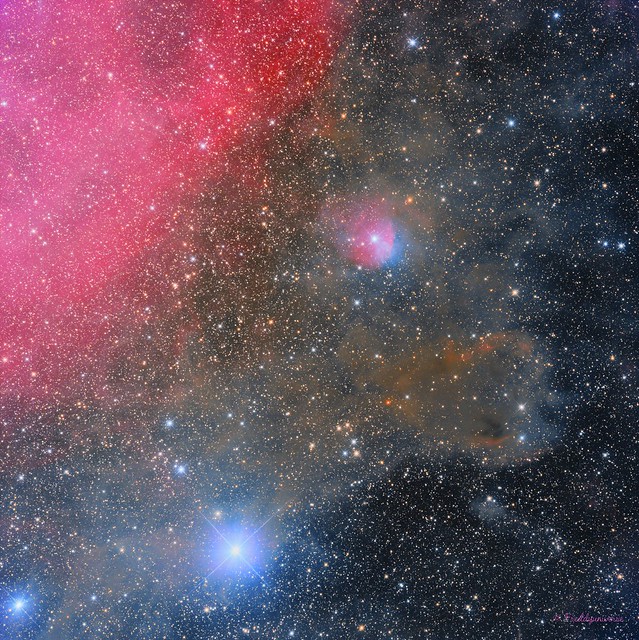 The Moldy Strawberry Nebula and surroundings by Freddy S., en Flickr
The Moldy Strawberry Nebula and surroundings by Freddy S., en Flickr
Last edited by bystander on Sat Feb 16, 2019 10:21 pm, edited 1 time in total.
Reason: Please no hotlinks to images > 500Kb. Substituted smaller image.
Reason: Please no hotlinks to images > 500Kb. Substituted smaller image.
Re: Submission: 2019 February
Moon Mosaic made out of 38 single images:
Made this panorama of our Moon out of 38 video-files using the "lucky imaging" technique with my 10inch Newtonian reflector two days ago.
Made this panorama of our Moon out of 38 video-files using the "lucky imaging" technique with my 10inch Newtonian reflector two days ago.
-
jjimenezpp
- Ensign
- Posts: 23
- Joined: Mon Dec 17, 2018 10:51 am
Re: Submission: 2019 February
Rosette nebula to Cone nebula
H-Alpha with DSLR and Optolong H-alpha 7nn Astronomy Filter
Canon 6D + ImagingStar71
Mosaic 5x900" + 5x900"
Large image
Large image, annotated version

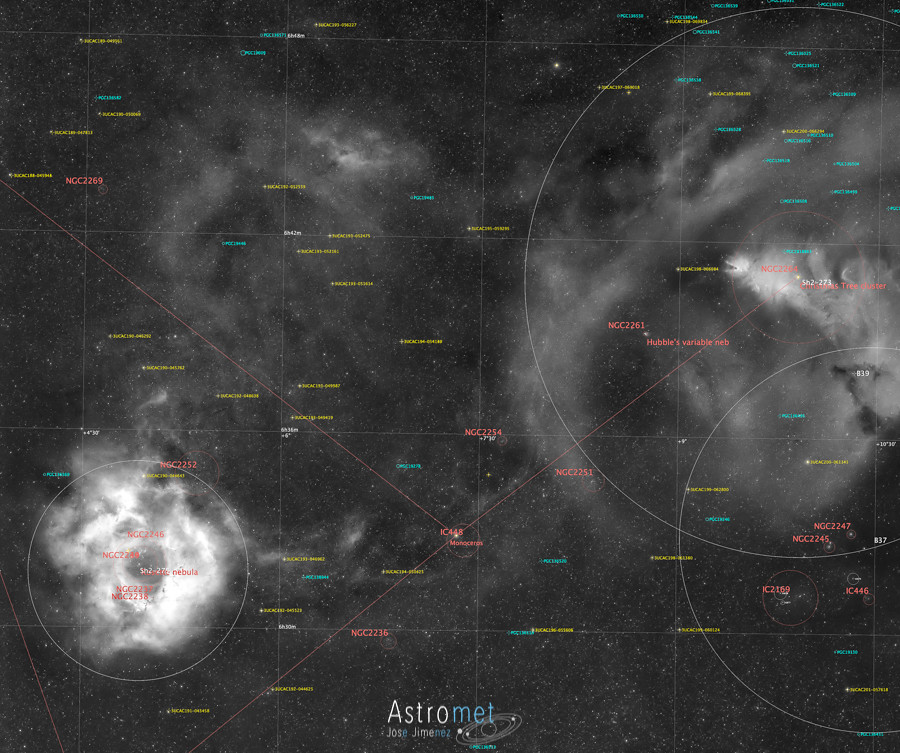
José Jiménez
H-Alpha with DSLR and Optolong H-alpha 7nn Astronomy Filter
Canon 6D + ImagingStar71
Mosaic 5x900" + 5x900"
Large image
Large image, annotated version


José Jiménez
-
jjimenezpp
- Ensign
- Posts: 23
- Joined: Mon Dec 17, 2018 10:51 am
Re: Submission: 2019 February
NGC 2237 Rosette nebula
Rosette nebula SHO + RGB
Large image
Large image, annotated version
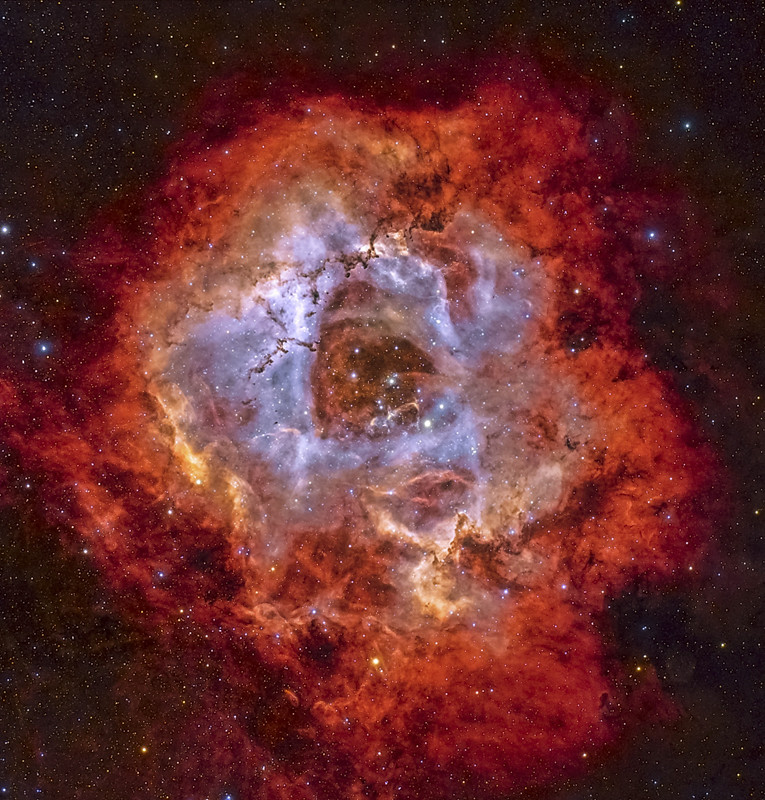
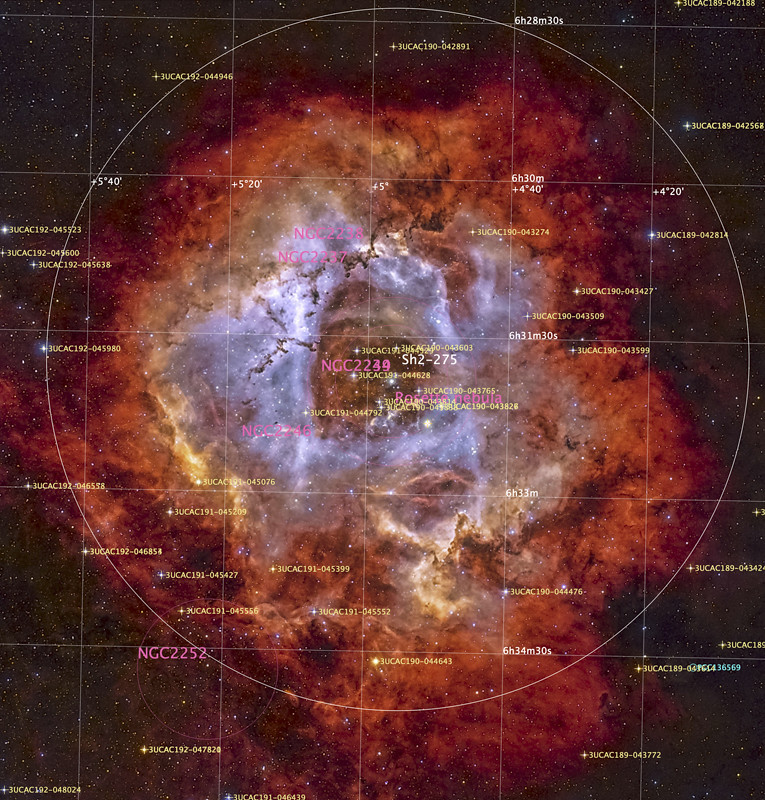
Raul Villaverde & José Jiménez
Rosette nebula SHO + RGB
Large image
Large image, annotated version


Raul Villaverde & José Jiménez
-
jjimenezpp
- Ensign
- Posts: 23
- Joined: Mon Dec 17, 2018 10:51 am
Re: Submission: 2019 February
IC 410 - The Tadpoles
Paletta Hubble
RGB Canon 550D cooled + Imaging Star 71, 15 x 600" ISO 1600
H-Alpha 25x600" Atik 383L + MN190
S 30x600" Atik 383L+ MN190
O 30x600" Atik 383L+ MN190
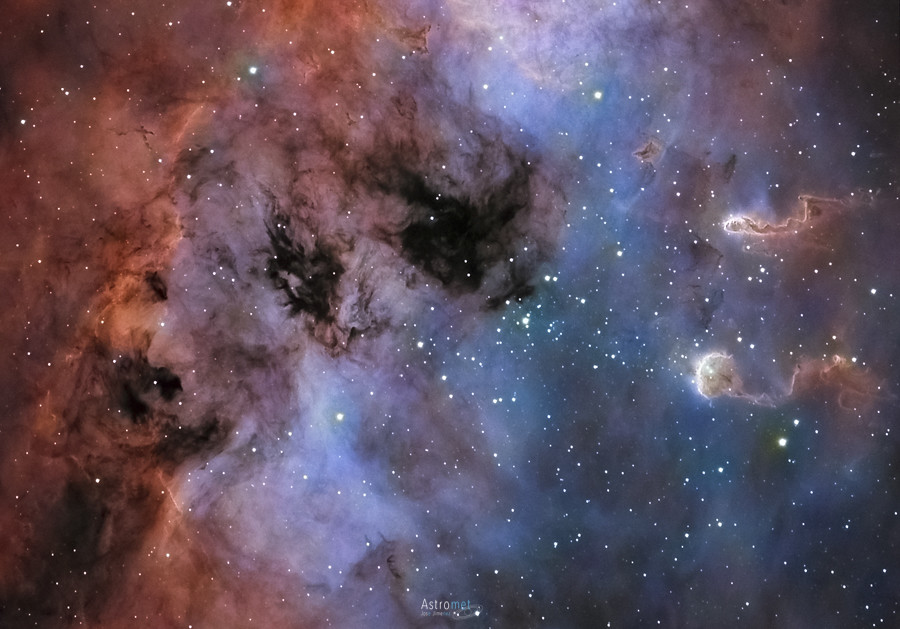
José Jiménez
Paletta Hubble
RGB Canon 550D cooled + Imaging Star 71, 15 x 600" ISO 1600
H-Alpha 25x600" Atik 383L + MN190
S 30x600" Atik 383L+ MN190
O 30x600" Atik 383L+ MN190

José Jiménez
Re: Submission: 2019 February
Thank you, Freddyuniverse, your Mouldy Strawberry Nebula portraits are very beautiful!Freddyuniverse wrote: ↑Sat Feb 16, 2019 9:53 amAnd I return with the Moldy Strawberry Nebula, which I did not finish convincing and I have put a reprocessing! what do you think !!??Freddyuniverse wrote: ↑Mon Feb 11, 2019 8:37 pm The Moldy Strawberry Nebula and surroundings
Takahashi Épsilon 180 + Moravian G4 16000
Procesed with PixInsight
2019-02-05
All the data on my website
https://www.freddyuniverse.com/galeria- ... nebulosas/
www.freddyuniverse.com
The Moldy Strawberry Nebula and surroundings by Freddy S., en Flickr
The Moldy Strawberry Nebula and surroundings Annotated by Freddy S., en Flickr
The Moldy Strawberry Nebula and surroundings by Freddy S., en Flickr
Ann
Color Commentator
Re: Submission: 2019 February
M1 Crab Nebula in RGB(HaOIII)
M1 Crab Nebula in SHO
Side-by-side comparison of the two:
Copyright: Christopher Sullivan
Full resolution images available here:
https://www.astrobin.com/full/386404/
https://www.astrobin.com/full/387582/
Full resolution images available here:
https://www.astrobin.com/full/386404/
https://www.astrobin.com/full/387582/
-
kurucz_peter
Re: Submission: 2019 February
not a red rose
www.peterkurucz.com
Copyright: Peter Kurucz
https://www.peterkurucz.com/apod-submission
www.peterkurucz.com
Copyright: Peter Kurucz
https://www.peterkurucz.com/apod-submission
Last edited by bystander on Mon Feb 18, 2019 3:23 pm, edited 1 time in total.
Reason: all <img> tags require image urls, not page urls
Reason: all <img> tags require image urls, not page urls
-
Luc CATHALA
- Asternaut
- Posts: 4
- Joined: Mon Feb 18, 2019 8:10 am
Re: Submission: 2019 February
Hello
I submit you this Tycho's picture.
Very little time in a life the sky allows in the Rhône valley in France to exploit almost fully the capabilities of large telescopes like my newton 24" that I built. It lasted 20 minutes on the night of February 15. I was able to image some craters like Tycho in high resolution. The focal length used is 10920 mm (barlow 4), red filter 610, camera QHY5-III 178M, original at 120% image to better see the details.
Regards
Luc CATHALA
Mazan FRANCE

original : https://www.astrobin.com/full/391518/F/ ... real=&mod=
I submit you this Tycho's picture.
Very little time in a life the sky allows in the Rhône valley in France to exploit almost fully the capabilities of large telescopes like my newton 24" that I built. It lasted 20 minutes on the night of February 15. I was able to image some craters like Tycho in high resolution. The focal length used is 10920 mm (barlow 4), red filter 610, camera QHY5-III 178M, original at 120% image to better see the details.
Regards
Luc CATHALA
Mazan FRANCE

original : https://www.astrobin.com/full/391518/F/ ... real=&mod=
-
balazs.benei
- Asternaut
- Posts: 2
- Joined: Mon Feb 18, 2019 9:34 am
Re: Submission: 2019 February
Hello everyone,
I submit you a picture of a Lunar Transit of the ISS.
21:47 UT
29.11.2018.
Budapest, Hungary
72/500 refractor
10mm Plössl eyepiece
Samsung Galaxy A5 smartphone in video mode
 ISS transit by Balazs Benei, on Flickr
ISS transit by Balazs Benei, on Flickr
I submit you a picture of a Lunar Transit of the ISS.
21:47 UT
29.11.2018.
Budapest, Hungary
72/500 refractor
10mm Plössl eyepiece
Samsung Galaxy A5 smartphone in video mode
 ISS transit by Balazs Benei, on Flickr
ISS transit by Balazs Benei, on Flickr-
jjimenezpp
- Ensign
- Posts: 23
- Joined: Mon Dec 17, 2018 10:51 am
Re: Submission: 2019 February
Dark nebulae LDN 1251 and LDN 1262 in Cepheus
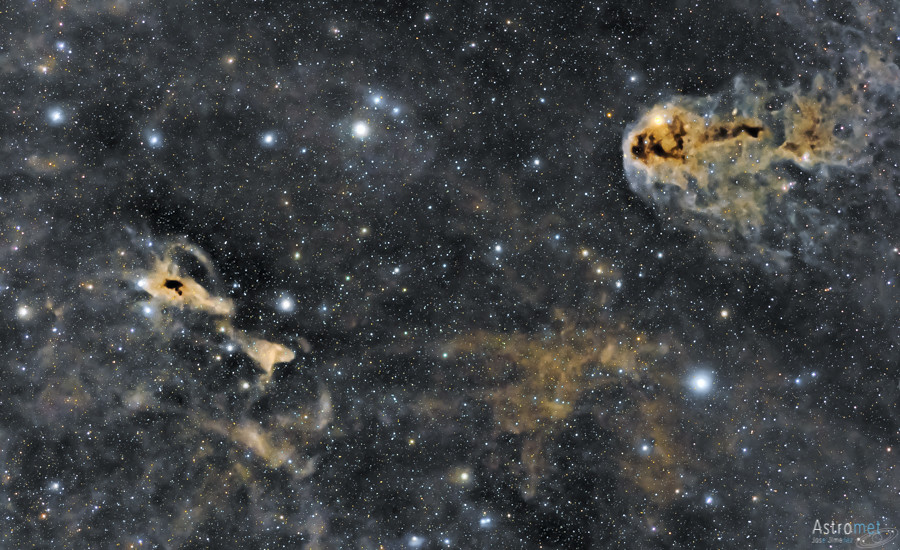
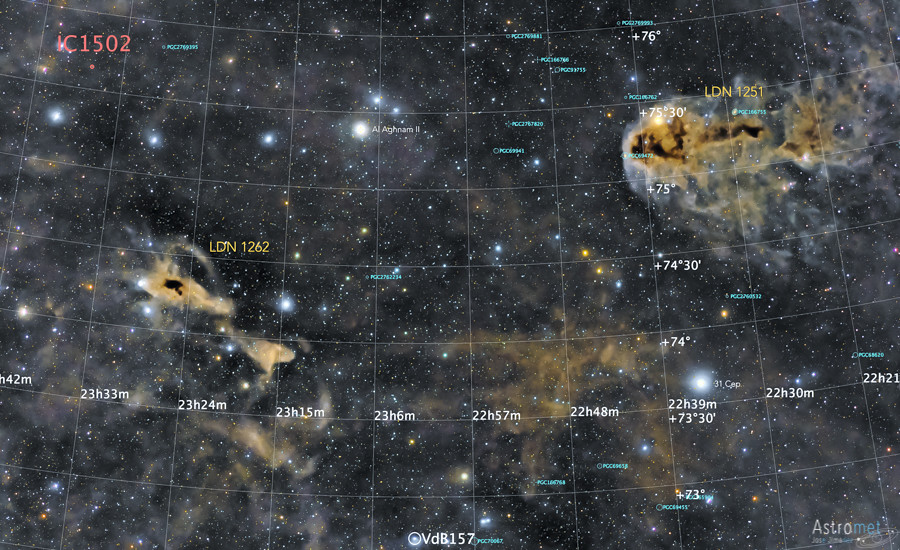
Large image
Large image, annotated version
La Jonquera, Sant Quirze de Colera and Albanya - Girona
Equipment used :
- ImagingStar 71 Telescope
- SkyWatcher EQ-6 mount
- Camera Canon 6D mod
- 50x600 "RGB Canon 6D mod
- 35 Darks, 35 Flats and 75 Bias
José Jiménez


Large image
Large image, annotated version
La Jonquera, Sant Quirze de Colera and Albanya - Girona
Equipment used :
- ImagingStar 71 Telescope
- SkyWatcher EQ-6 mount
- Camera Canon 6D mod
- 50x600 "RGB Canon 6D mod
- 35 Darks, 35 Flats and 75 Bias
José Jiménez
-
cosmicwreckingball
- Ensign
- Posts: 31
- Joined: Tue May 26, 2015 2:57 pm
- AKA: Matt Harbison
- Location: Chattanooga, TN
- Contact:
Re: Submission: 2019 February
Orion
78 Panel Mosaic at 1.67 pixel scale, captured over the last three years.
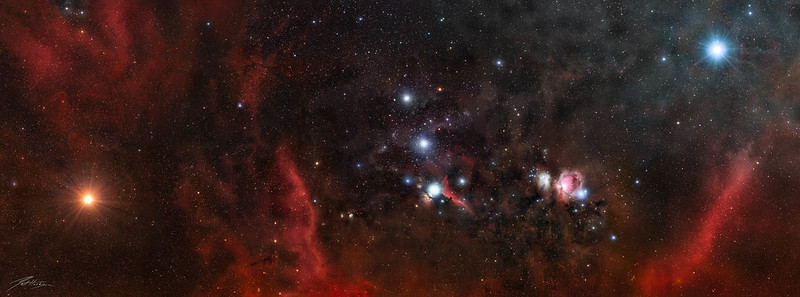
High Res: https://www.astrobin.com/full/391560/0/?real=&mod=
Details:
Equipment:
2x William Optics 132 w/ .8 Reducer operating at F5.6
Moonlite Rotating Focuser with DRO Panel
2x QHY 16200 with Astrodon LRGB Filters
Astro Physics 1100 GTO
QHY Medium OAG
Kendrick Power Panel
Kendrick Dew Heater ATS 48” Pier
ADM dual saddle with ADM robin Cassidy aiming device.
Integration per panel: L- 8 x 180s R- 8 x 180s G- 8 x 180s B- 8 x 180s Darks, Bias, & Flats acquired for each panel
Acquisition: Captured with the use of Sequence Generator Pro by Main Sequence Software. Edited and calibrated bin Pixinsight Astro Imaging Software. Export & Levels in Adobe Photoshop. Data captured over the course of three years, traveling remotely to image from dark sites in TN, GA, and TX. 2019 data captured in the Marathon Remote Imaging Observatory (MaRIO) in Marathon, TX.
Workflow: Calibration in BPP with flats, darks, bias, and light frames-per scope (Batch Pre Processing) Integration with star alignment outside of BPP with the Star Alignment Tool Processing with LRGB combination and photometric Color calibration applied per pane Histogram transformation, SCNR and Curves to match each panel. Assembled by image solving per panel Mosaic by coordinates Gradient Merge Mosaic to ensure proper panel alignment and solving Levels and exporting in Photoshop
78 Panel Mosaic at 1.67 pixel scale, captured over the last three years.

High Res: https://www.astrobin.com/full/391560/0/?real=&mod=
Details:
Equipment:
2x William Optics 132 w/ .8 Reducer operating at F5.6
Moonlite Rotating Focuser with DRO Panel
2x QHY 16200 with Astrodon LRGB Filters
Astro Physics 1100 GTO
QHY Medium OAG
Kendrick Power Panel
Kendrick Dew Heater ATS 48” Pier
ADM dual saddle with ADM robin Cassidy aiming device.
Integration per panel: L- 8 x 180s R- 8 x 180s G- 8 x 180s B- 8 x 180s Darks, Bias, & Flats acquired for each panel
Acquisition: Captured with the use of Sequence Generator Pro by Main Sequence Software. Edited and calibrated bin Pixinsight Astro Imaging Software. Export & Levels in Adobe Photoshop. Data captured over the course of three years, traveling remotely to image from dark sites in TN, GA, and TX. 2019 data captured in the Marathon Remote Imaging Observatory (MaRIO) in Marathon, TX.
Workflow: Calibration in BPP with flats, darks, bias, and light frames-per scope (Batch Pre Processing) Integration with star alignment outside of BPP with the Star Alignment Tool Processing with LRGB combination and photometric Color calibration applied per pane Histogram transformation, SCNR and Curves to match each panel. Assembled by image solving per panel Mosaic by coordinates Gradient Merge Mosaic to ensure proper panel alignment and solving Levels and exporting in Photoshop
Matt Harbison
President Emeritus, Barnard Astronomical Society of Chattanooga
Cameras, Binoculars, Dobs, Cats, and Refractors. Whatever it takes!
President Emeritus, Barnard Astronomical Society of Chattanooga
Cameras, Binoculars, Dobs, Cats, and Refractors. Whatever it takes!
-
Freddyuniverse
- Ensign
- Posts: 19
- Joined: Tue Jul 24, 2018 11:15 pm
Re: Submission: 2019 February
Thanks Ann, they are Bellatrix and Lambda Orionis, but do not tell me that you are not a little afraid of the ghost (SH2 265) that runs between Bellatrix and the Strawberry Nebula...Ann wrote: ↑Sun Feb 17, 2019 12:25 pmThank you, Freddyuniverse, your Mouldy Strawberry Nebula portraits are very beautiful!Freddyuniverse wrote: ↑Sat Feb 16, 2019 9:53 amAnd I return with the Moldy Strawberry Nebula, which I did not finish convincing and I have put a reprocessing! what do you think !!??Freddyuniverse wrote: ↑Mon Feb 11, 2019 8:37 pm The Moldy Strawberry Nebula and surroundings
Takahashi Épsilon 180 + Moravian G4 16000
Procesed with PixInsight
2019-02-05
All the data on my website
https://www.freddyuniverse.com/galeria- ... nebulosas/
www.freddyuniverse.com
The Moldy Strawberry Nebula and surroundings by Freddy S., en Flickr
The Moldy Strawberry Nebula and surroundings Annotated by Freddy S., en Flickr
The Moldy Strawberry Nebula and surroundings by Freddy S., en Flickr
By the way, the bright blue star in your pictures is Bellatrix in Orion, and the large red nebula at left is the Lambda Orionis Nebula.
Ann
Re: Submission: 2019 February
Mosaic of the Andromeda Galaxy - 8 single parts:
Oh boy, what a challenge to process 130 subs, collected from July to October last year, and make an 8 panel mosaic out of it, using my 10inch Newtonian reflector and DSLR, to get a detailed image of our neighbour galaxy:
Oh boy, what a challenge to process 130 subs, collected from July to October last year, and make an 8 panel mosaic out of it, using my 10inch Newtonian reflector and DSLR, to get a detailed image of our neighbour galaxy:
Re: Submission: 2019 February
Drool.Luc CATHALA wrote: ↑Mon Feb 18, 2019 8:33 am Hello
I submit you this Tycho's picture.
Very little time in a life the sky allows in the Rhône valley in France to exploit almost fully the capabilities of large telescopes like my newton 24" that I built. It lasted 20 minutes on the night of February 15. I was able to image some craters like Tycho in high resolution. The focal length used is 10920 mm (barlow 4), red filter 610, camera QHY5-III 178M, original at 120% image to better see the details.
Regards
Luc CATHALA
Mazan FRANCE
original : https://www.astrobin.com/full/391518/F/ ... real=&mod=
- AlexMaragos
- Ensign
- Posts: 83
- Joined: Tue Jan 04, 2011 4:02 pm
- AKA: Alexandros Maragos
- Location: In transit
- Contact:
Re: Submission: 2019 February
The biggest and brightest Supermoon of the year rises over the Acropolis in Athens, Greece on Feb 19, 2019.
https://www.instagram.com/alexmaragos
Copyright: Alexandros Maragos

Supermoon 2019 over the Acropolis by Alexandros Maragos
https://www.instagram.com/alexmaragos
Copyright: Alexandros Maragos

Supermoon 2019 over the Acropolis by Alexandros Maragos


